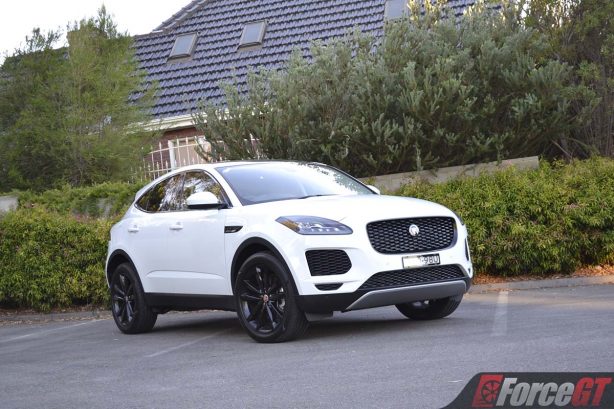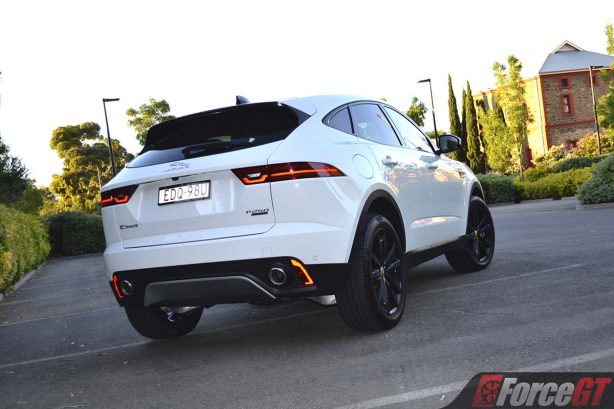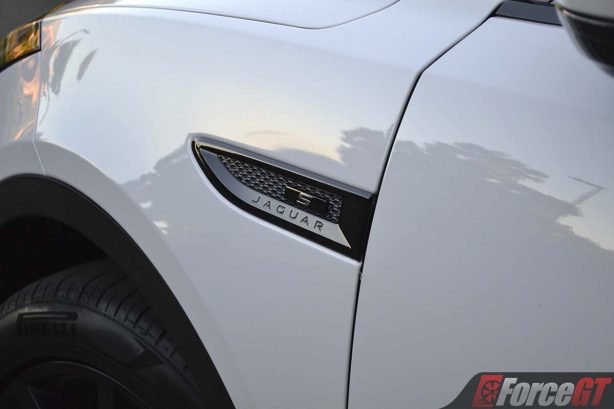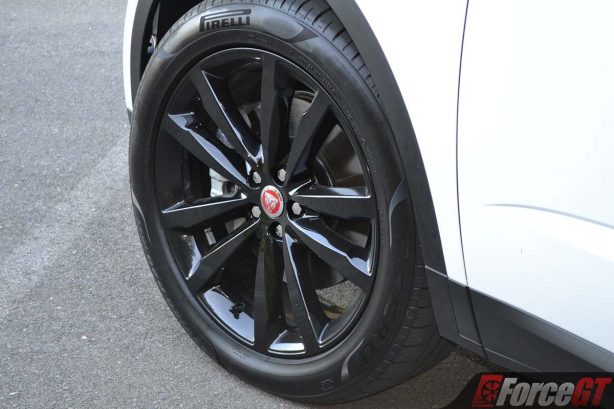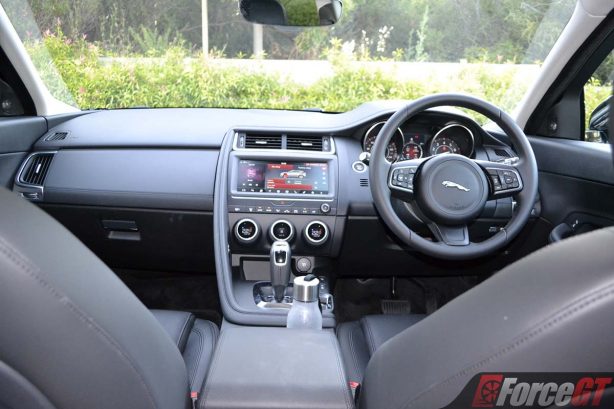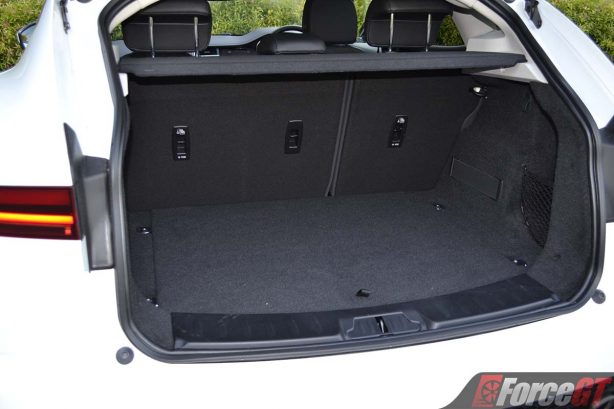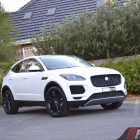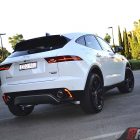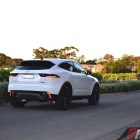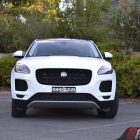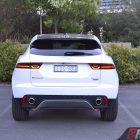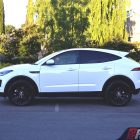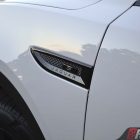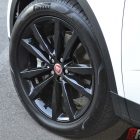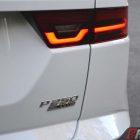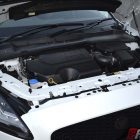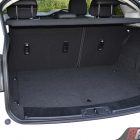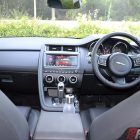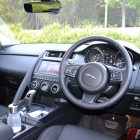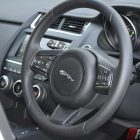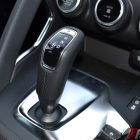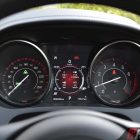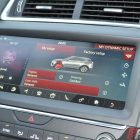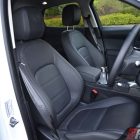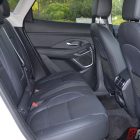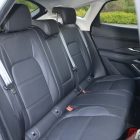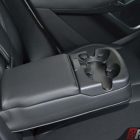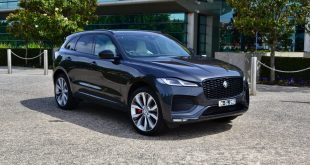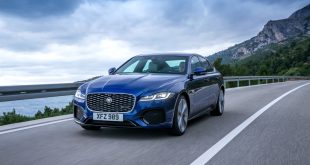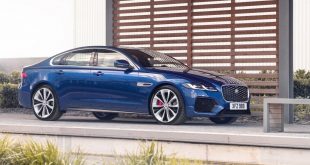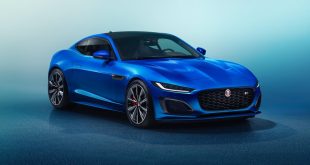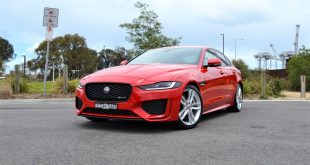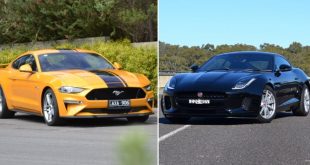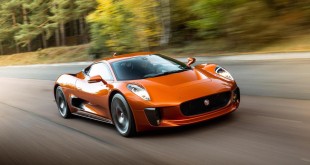It’s been two years since Jaguar introduced its baby SUV, the E-Pace locally and in the intervening years, we’ve had plenty of new metals coming into arena, including the new BMW X1, Audi Q2, as well as Jaguar Land Rover’s own second-generation Evoque.
As a refresh, the E-Pace is the British marque’s entry-level SUV based on the previous-generation Evoque. Unlike Jaguar’s larger offering, the F-Pace, the E-Pace is available only with four-cylinder engines in a transverse layout.
When it first burst onto the scene, the E-Pace came with a bewildering number of iterations (38 different configurations at last count) which makes the buying decision harder than picking Lotto numbers.
Wisely, JLR streamlined the range last year to make things easier. It now consists of two engine options – the D180 with a 2.0-litre four-cylinder turbo-diesel producing 132kW and 380Nm, and the P250 tested here with a 2.0-litre four-cylinder turbocharged petrol generating 183kW and 365Nm. The entry-level D150 diesel has been dropped.
The D180 is offered in four trim levels – the regular S and SE, and the sportier R-Dynamic S and SE, while the P250 can be had in six trim options – S, SE, HSE, R-Dynamic S, SE and HSE.
A limited edition Chequered Flag variant also joins the range this year, bridging the gap in terms of equipment and price between the S and SE.
Prices begin at $58,730 for the D180 S and work their way up to $74,012 for the P250 R-Dynamic HSE. Our P250 R-Dynamic S here starts from $62,730, with the Chequered Flag duo coming in at $67,380 (D180) and $67,600 (P250) – all before on-road costs and options.
All variants feature all-wheel drive and a nine-speed automatic transmission; a combination that Jaguar claims could propel the P250 E-Pace tested here from 0-100km/h in a respectable 7.1 seconds.
That’s relatively impressive considering the P250 R-Dynamic S tips the scale at a porky 1,832kg, a significant 250kg more than the BMW X1 xDrive25i and a whopping 310kg heftier than the lithe Audi Q2 40 TFSI. Astonishingly, it’s also around 100kg heavier than its big brother, the Jaguar F-Pace.
There’s a simple explanation, though. Unlike the F-Pace aluminum intensive underpinnings, the E-Pace is based on the previous Evoque’s steel platform. Still, Jaguar engineers have done a commendable job in disguising those kilos.
Jaguar press vehicles usually come with an exorbitant amount of options, and while the $10,000 added on to our tester may sound like a lot, we have had cars that were packed with over $25,000 worth of extras.
Things like Head-up Display, which is standard on a $24,000 Mazda 3 costs $1,630 here. Jaguar even charges $190 to activate the fancy rear animated indicators. Really?
However, to be fair, the Drive Pro Pack which used to cost $1,020 to add things like Adaptive Cruise Control, Blind Spot Assist and Intelligent Emergency Braking is now standard, along with DAB+ digital radio.
Two years can be a long time in the car world and the E-Pace’s interior is starting to look dated compared to fresher offerings. The all black interior does little to help the course. A splash of colour here and there wouldn’t go astray. Then, there’s the angle of the 10-inch infotainment screen which catches the full glare of the Australian summer sun, making it hard to see.
Nevertheless, the sweeping dashboard is sportily driver oriented with most controls angled towards the driver, while the front passenger gets a useful grab handle. Speaking of which, that’s the only handle you’ll find in the entire cabin as puzzlingly, Jaguar has omitted any form of overhead grab handles.
Cabin materials are good with soft touch plastic to most surfaces including the door cards. It’s also pleasing to see the more conventional gear lever making a come back to JLR vehicles instead of the rotary dial.
The driving position is good with pedals that are well placed and the steering adjusting for both reach and rake. The optional electrically operated front seats operate in 10-ways.
At 2,681mm, the E-Pace has the longest wheelbase compared to the X1 and Q2 with most of it being put to good use. The cabin feels roomy with generous head and should room for two adults at the back.
There are rear air vents to keep rear occupants comfortable, while three USB ports take care of charging duties for on board devices and the fold-down rear armrest also incorporates two cupholders.
Further aback, the boot space offers up 484 litres seat up compared to the X1’s 505 litres, and the Q2’s meager 355 litres.
What lets the E-Pace down is its drivetrain. The 2.0-litre turbocharged four-cylinder Ingenium engine certainly looks good on paper with healthy power and torque, but the reality is quite the opposite. It’s slow to respond to inputs and the nine-speed auto compounds the situation with its tardiness, too. Flicking the transmission into sports mode gives the drivetrain a little more urgency but there’s no hiding the serious lack of engine response.
That’s a shame because the E-Pace’s handling is still one of the better ones in its class with decent steering feedback. The passive suspension as strikes a good balance between ride comfort and cornering sharpness.
Jaguar claims the P250 consumes an average of 7.7L/100km on the combined cycle but we managed 8.6L/100km after a week of mixed driving, including plenty of demanding country B-roads.
All Jaguars are covered by 3 years, 100,000km warranty, while service interval is a generous 26,000km or 12 months, whichever comes first. Servicing costs $1,750 for the first five years or 102,000km under the Jaguar Servicing Plan. This works out to be $350/year.
Verdict
Design & Comfort
Performance & Handling
Quality
Economy
Equipment & Features
OUR SCORE
3.7/5
+ Plus
- Stylish looks
- Updated infotainment system
- Decent dynamics and ride comfort
- Roomy interior
– Minus
- Lethargic off the line and laggy transmission
- Interior looks dated
Overall
The streamlined 2020 Jaguar E-Pace range no doubt makes the buying decision much easier. It is also better equipped than before.
However, while it is still a good-looker with decent interior space, comfort and surprisingly sharp dynamics, it’s let down by an underwhelming drivetrain.
2020 Jaguar E-Pace P250 R-Dynamic S pricing and specs
| Price (excluding on-road costs): | From: $62,730 As tested: $72,130 Tested options: 20 inch Style 5051, 5 Split-spoke, Gloss Black – $2,420 Head-up Display – $1,630 MeridianTM Sound System – $1,270 Black Contrast Roof – $970 Black Exterior Pack – $890 Privacy Glass – $690 Configurable Dynamics – $680 10-way Heated Electric Front Seats – $660 Rear animated directional indicators – $190 |
| Warranty: | 3 years/100,000km |
| Warranty Customer Assistance: | 3 years/100,000km roadside |
| Service Intervals: | 12 months/26,000km |
| Country of Origin: | United Kingdom (Built in Austria) |
| Engine: | 2.0-litre turbocharged, direct injection in-line four-cylinder petrol: 183kW @ 5,500rpm, 365Nm @ 1,350rpm |
| Transmission: | 9-speed automatic |
| Drivetrain: | All-wheel drive |
| Power-to-Weight Ratio (W/kg): | 104.2 |
| 0-100km/h (seconds): | Claimed: 7.0 |
| Combined Fuel Consumption (L/100km): | Claimed: 7.7/Tested: 8.6 |
| RON Rating: | 95 |
| Fuel Capacity (L): | 68 |
| Body: | 5-door SUV, 5 seats |
| Safety: | 5-star ANCAP, 7 airbags including pedestrian airbag,ABS, BA, EBD, ESC, Autonomous Emergency Braking, Blind Spot Assist, Adaptive Cruise Control with Queue Assist, Driver Condition Monitor, High-Speed Emergency Braking, Lane Keep Assist, Rear Traffic Monitor, Park Assist, rear view camera, ISOFIX |
| Dimensions (L/W/H/W-B): | 4,411/1,984/1,649/2,681 |
| Boot Space (min/max) (L): | 484/1,141 |
| Turning Circle Between Kerbs: | 11.9 |
| Ground Clearance: | 204 |
| Kerb Weight (kg): | 1,843 |
| Towing Capacity (kg): | Braked: 1,800/Unbraked: 750 |
| Entertainment: | 10-inch colour touchscreen, satellite navigation, AM/FM/DAB, Bluetooth, Apple CarPlay/Android Auto, USB, AUX, iPod 380W Meridian sound system with 11 speakers |
Competitors: BMW X2, Volvo XC40, Infiniti QX30, Audi Q3, Mercedes-Benz GLA, Range Rover Evoque
 ForceGT.com Car News, Car Reviews, Video Reviews, Tuning and much more.
ForceGT.com Car News, Car Reviews, Video Reviews, Tuning and much more. 